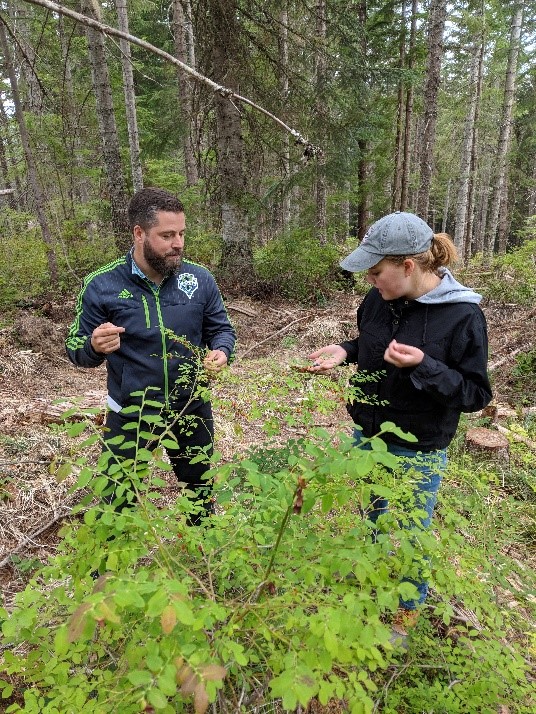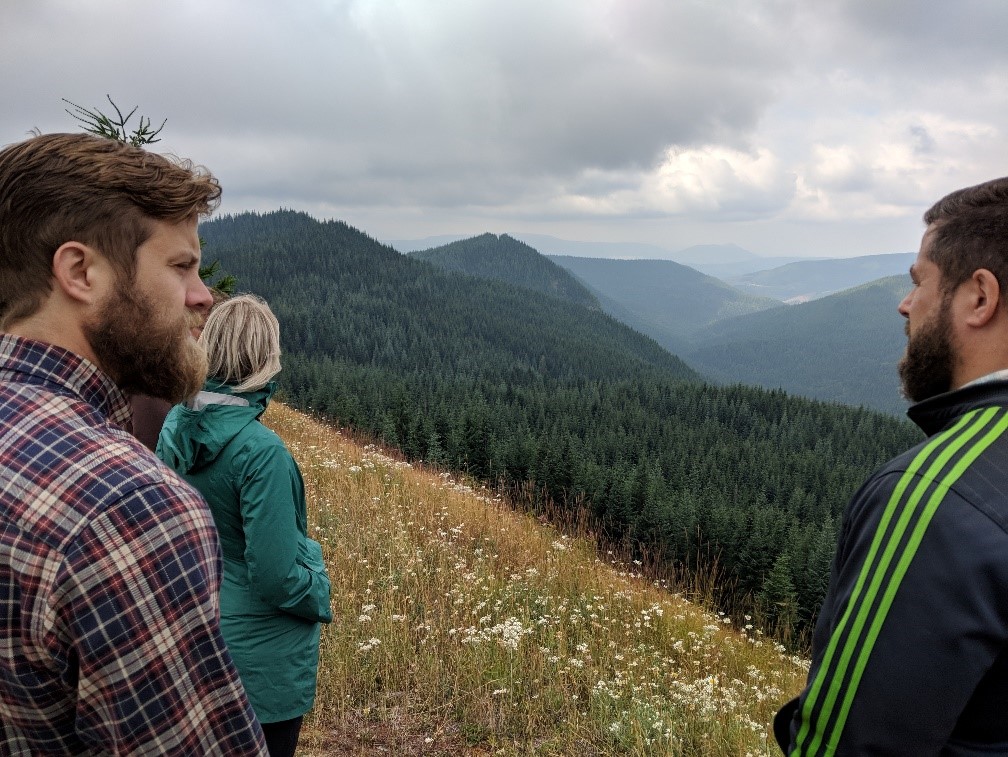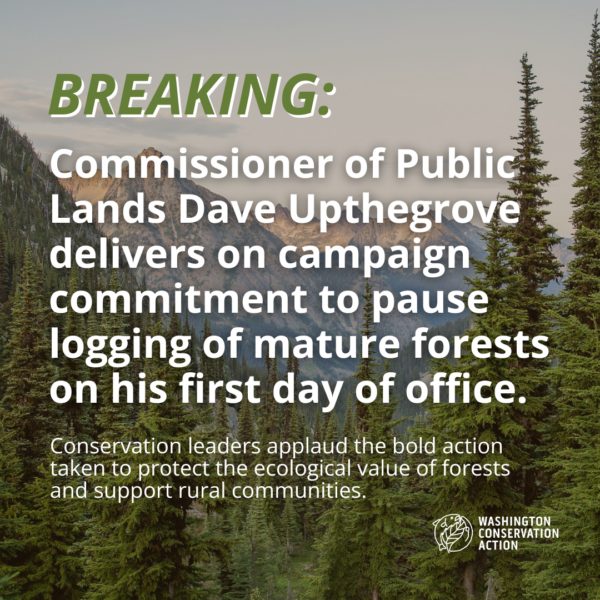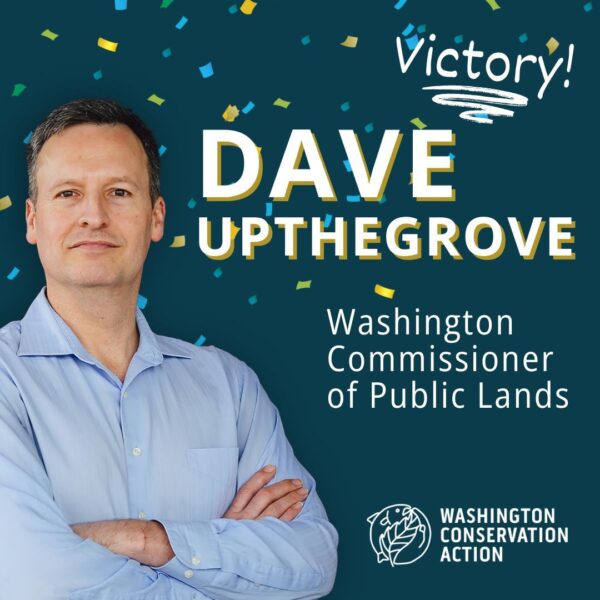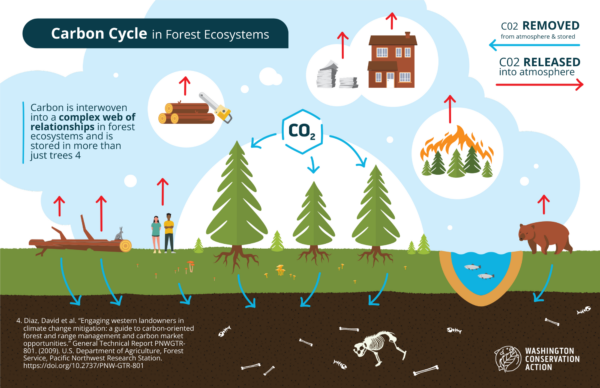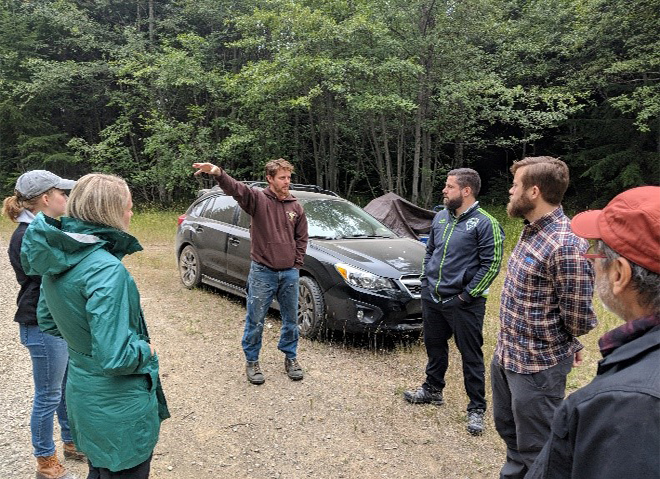
I’m here with the rest of WEC’s Evergreen Forests Team (Lisa, Alec, Sally and Miguel) to learn from Northwest Natural Resources Group’s Andy Chittick and the Nisqually Community Forest’s Justin Hall about what ecological forest management looks like here. For over 50 years, the Nisqually Community Forest has been managed heavily as an industrial timber plantation, and also an important forest for protecting salmon and other endangered species habitat for northern spotted owl and marbled murrelet.
Ecological forest management starts with understanding that forests are extremely valuable natural features and that human society needs to use wood products from the forest to support our own communities. With those understandings in place, foresters like Andy use science, not the promise of financial returns, to guide their decision making. They plan for the long term and select trees to harvest in a way that follows how forests and trees change with natural processes.
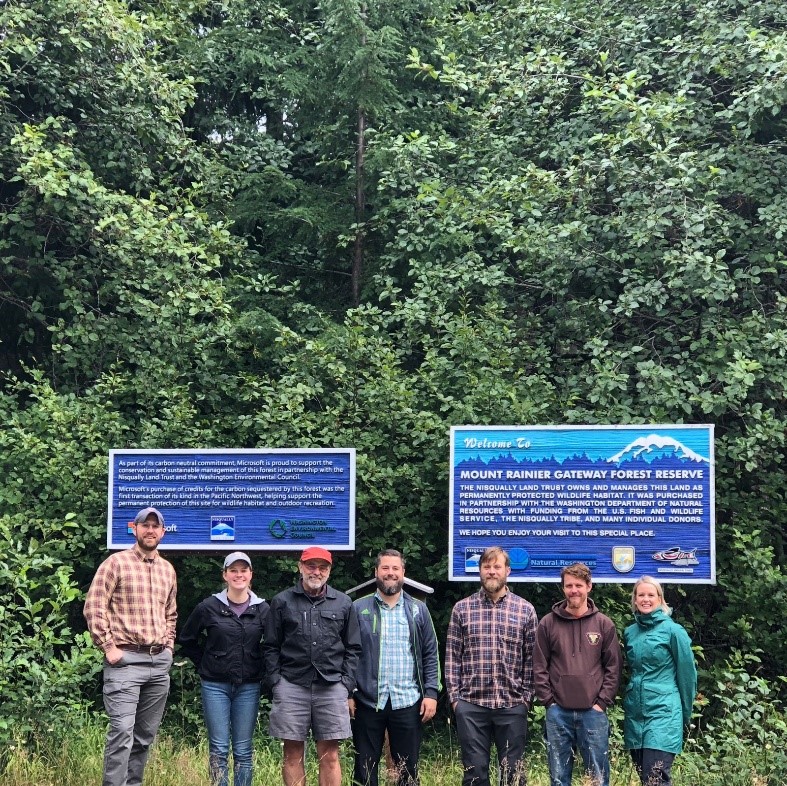
To show what this looks like on the landscape, Andy took us to three locations. All three sites were composed of trees that were the same age (somewhere between 40-50 years old) but which all received different management over the years so that they look very distinct and provide different benefits to the human and wildlife communities around them.
The first stand was harvested and planted without anything happening between then and now. It was full of small and dying trees that had been out-competed by the other bigger trees around them. While there was a lot of downed woody debris on the ground, the competition created by the trees, as well as the closed canopy above, and lack of sunlight meant that there was very little vegetation and hardly any young trees growing in the understory. While this forest is capturing carbon and protecting the watershed, its close and confined structure means that it isn’t providing much good habitat for birds and other wildlife.
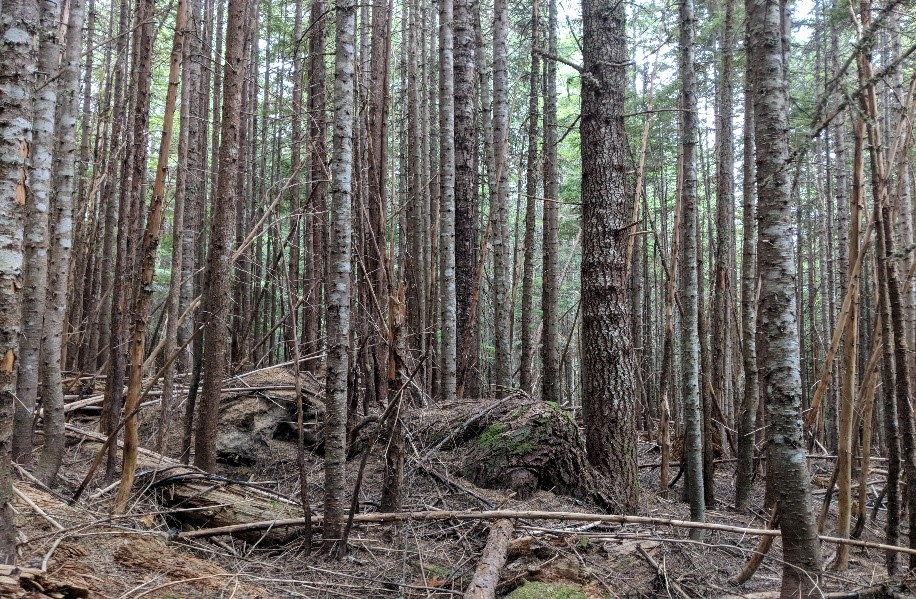
The second stand was harvested and planted just like the first. However, this area also received what is called a pre-commercial thinning, which means that the small trees that died (or were dying) were harvested and removed. This creates more space on the forest floor and more room for a little bit of vegetation to grow in the understory. This kind of forest can still be hard for birds and other animals to move around in. To open this stand up further, a number of other trees were selected (see the blue marks) for a commercial thinning. That means that these trees will be harvested for wood products, but many of the best and strongest trees in the stand will be left behind to grow bigger and stronger with less competition.
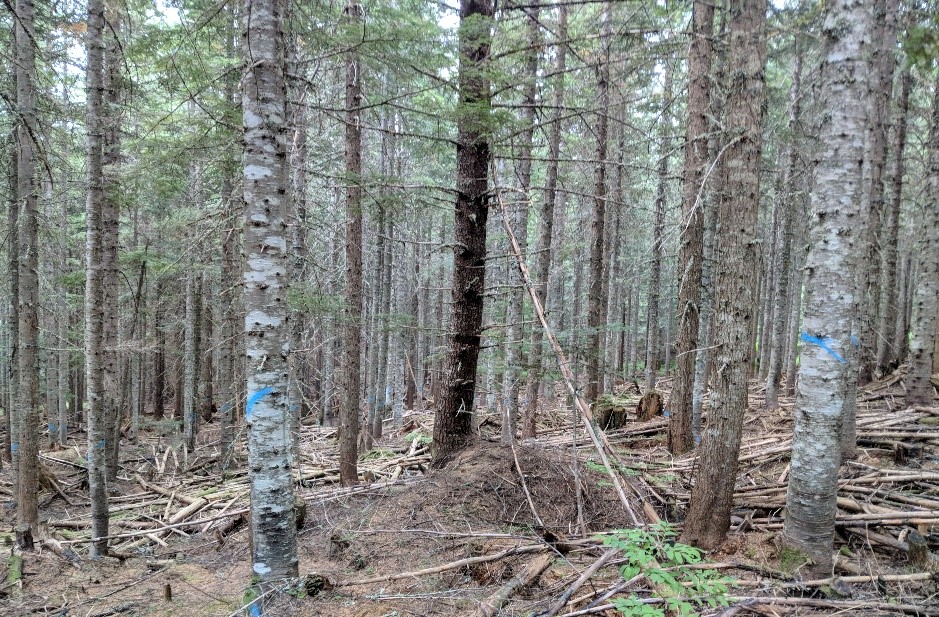
The third stand was one where a commercial thinning was carried out last year. Here, the biggest trees were left behind while the smaller ones were removed. In this stand, the big openings allowed for much more sunlight to reach the forest floor, letting plants like young trees, huckleberry, Oregon grape, and beargrass to grow. The more open forest structure here also means that birds have a much easier time flying around and are able to find nesting habitat. Still, a heavy overstory is left behind, meaning that trees will always be here and never completely cleared. This creates an older age class of trees that will provide structure complexity and resilience to the forest.
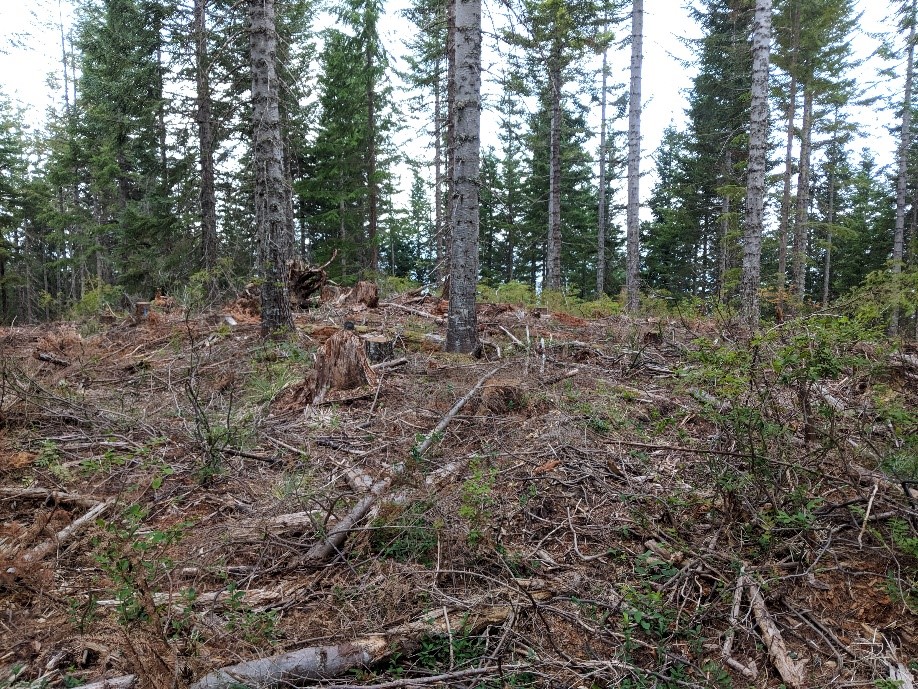
These harvests are meant to mimic natural disturbances like pest outbreaks, windstorms, and fires that would otherwise occur. Rather than having those trees be killed by those events though, they are harvested for human use instead. Mimicking these natural disturbances means that slowly over time, the forest structure can be restored to what it once was: A landscape full of multiple habitat types, with big old trees storing carbon for the long-term, protecting clean water and clean air for all.
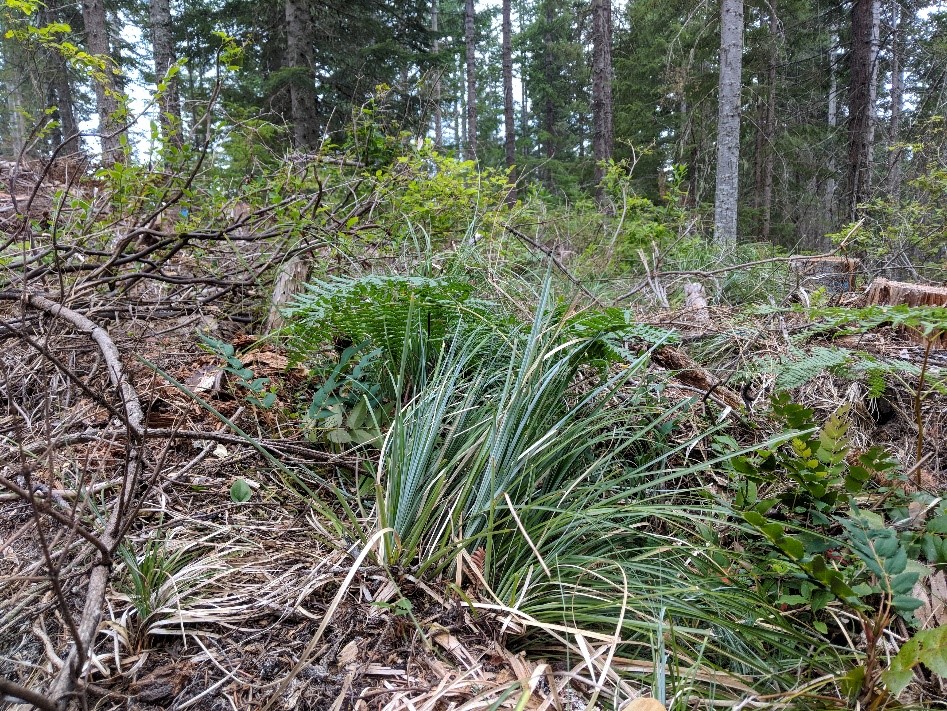
All over the state, land managers are using the principals of ecological forest management to restore forests and protect the benefits they provide. Through our Growing Our Future campaign, we are focused on making sure that these folks have the funding, tools, and resources that they need to do this important work.
